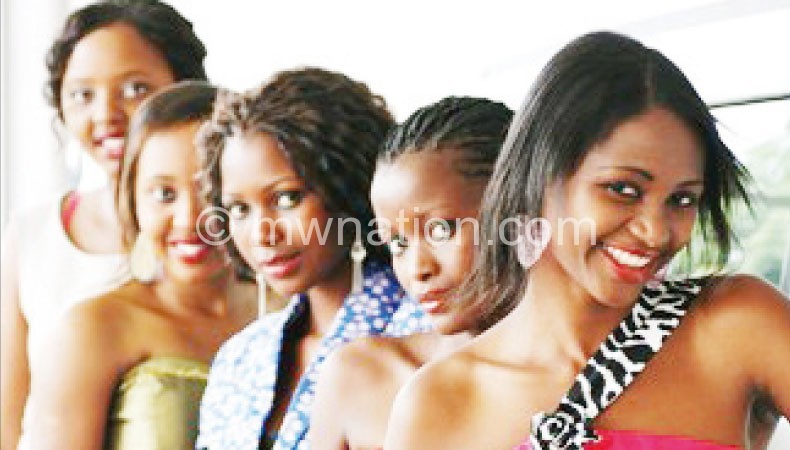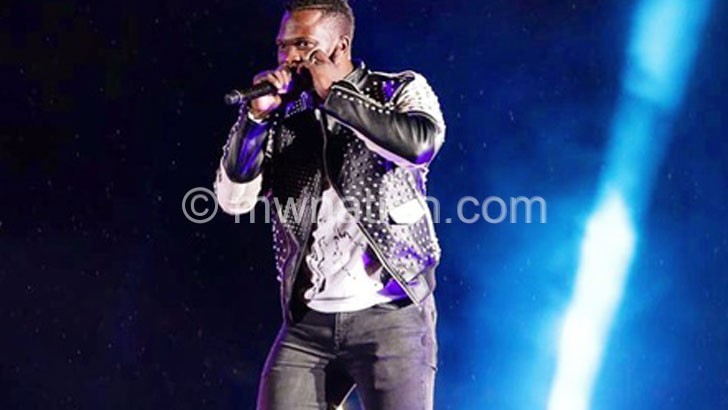Where are the models?

Not long ago, Malawi had no distinct modelling, fashion and designing
industry. All the country had were trendy tailors. Then things changed as the landscape witnessed the first crop of designers such as Lucy Nkhonjera and Rose Kaleke.
Then along came the generation of Lilly Alfonso, Cathy Kamthunzi and Chiku Gondwe, with more and more trendy fashionistas following in pursuit, including Neema Charles, Sana Kansichi and Memory Divine Chimchere.
It will not be wrong, therefore, for one to deduce that the Malawi fashion and design chart continues to rise. Which begs the question; where are the models who, in essence, work hand-in-hand with the designers?
Wikipedia defines a model, as a person who is employed to promote, display, or advertise commercial products notably fashion clothing or to serve as a visual object for people who are creating works of art.
Even in the absence of this meaning, it is undisputable fact that Malawi has models and surely, all those that attended the Malawi fashion week last year can attest to that.
So what is the problem?
“I think most models in the country do not take modelling as a career hence little seriousness is shown. Coupled with that is the fact that most agencies are there just to use abuse models.
“Again, people in the country associate modelling with prostitution hence a lot of capable models shy away from the industry because of such fears,” says Joy Wezi Gausi.
Most of the models who responded to questions from The Nation posted on the Malawian Models Facebook page either blamed designers and agencies for reaping them while a few acknowledged their shortfalls.
“Agencies and models are the main problem. As models, we don’t value our career, all we need is cheap fame while we get peanuts from whatever brand we are promoting yet the company rakes millions out of our sweat. Models really need to wake up because if you put your foot down on how you work, I don’t think agencies can take advantage of you,” explains Thenjiwe Kawoloka.
Niffat Lokosang states that organisers must realise that there would be no model show without the models.
“We are the show. It is time we models learn to respect our values and help ourselves fight this, if not us who else will do so? Don’t just sit back and complain. You have a voice and a right to be heard.”
Arguably Malawi’s celebrated model, Thembi Zimba also shares her misgivings over designers and agencies while also taking a swipe at
her peers.
“The standards models have set on themselves are too low. A model will do one cheesy gig and start putting her head high feeling proud
“Now agencies and fashion designers come in and see how so damn low the standards are and they treat you exactly like the standard you have set. Agencies don’t make models, you have qualities you were born with that make you a model and only with the correct mindset will that take you far,” she says.
While acknowledging the fact that designers are after money, Blantyre-based Charles of Charme89 label believes Malawi has got good models but agencies that have failed to promote them.
“We have good models out there but it is the bad perception we put forward when we mention modelling. Secondly, I don’t think we have proper modelling agencies to promote these models. That’s the reason a lot of good models pull back.
“However, I can’t say we have failed, I think it’s a matter of having enough resources because the support is also low because we are just looking at our own side that as long as we making clothes for people and getting money, that is,” she says.
One of the pioneers of the Malawi fashion industry Zilanie Nyundo notes that while Malawi modelling and fashion is small, these issues are multifaceted.
“We are a small country and this is a multifaceted issue. It should not be simplified like modelling for fashion and designing only. Our industries are young and small—there is not so much work for models in advertising but this will change.
“The advertising industry is one of the sectors that is not developing in a way that makes work for local models. If that changes, and if we improve quality of just about everything and make it possible for people to ‘buy Malawian’ in whatever we do, our industries will grow and our models will find work. After all, models are not just about fashion at all,” she explains.
She cites the corporate world is a best example of how Malawian models have been sidelined.
Says Zilanie: “Take a look at all the advertising in Malawi, how many companies are using images that are standard corporate images from headquarters in some other country? A lot.
“Sometimes the look and feel is not quite Malawian though lately such internationals are opting for looks that are closer in line to Malawi. It is unfortunate that Malawi models get sidelined by such corporate advertising.”
“But everything is a learning curve. We are a developing country in so many ways. The fashion industry too. But
models are not just about fashion. Models are used in so much more than fashion.”





